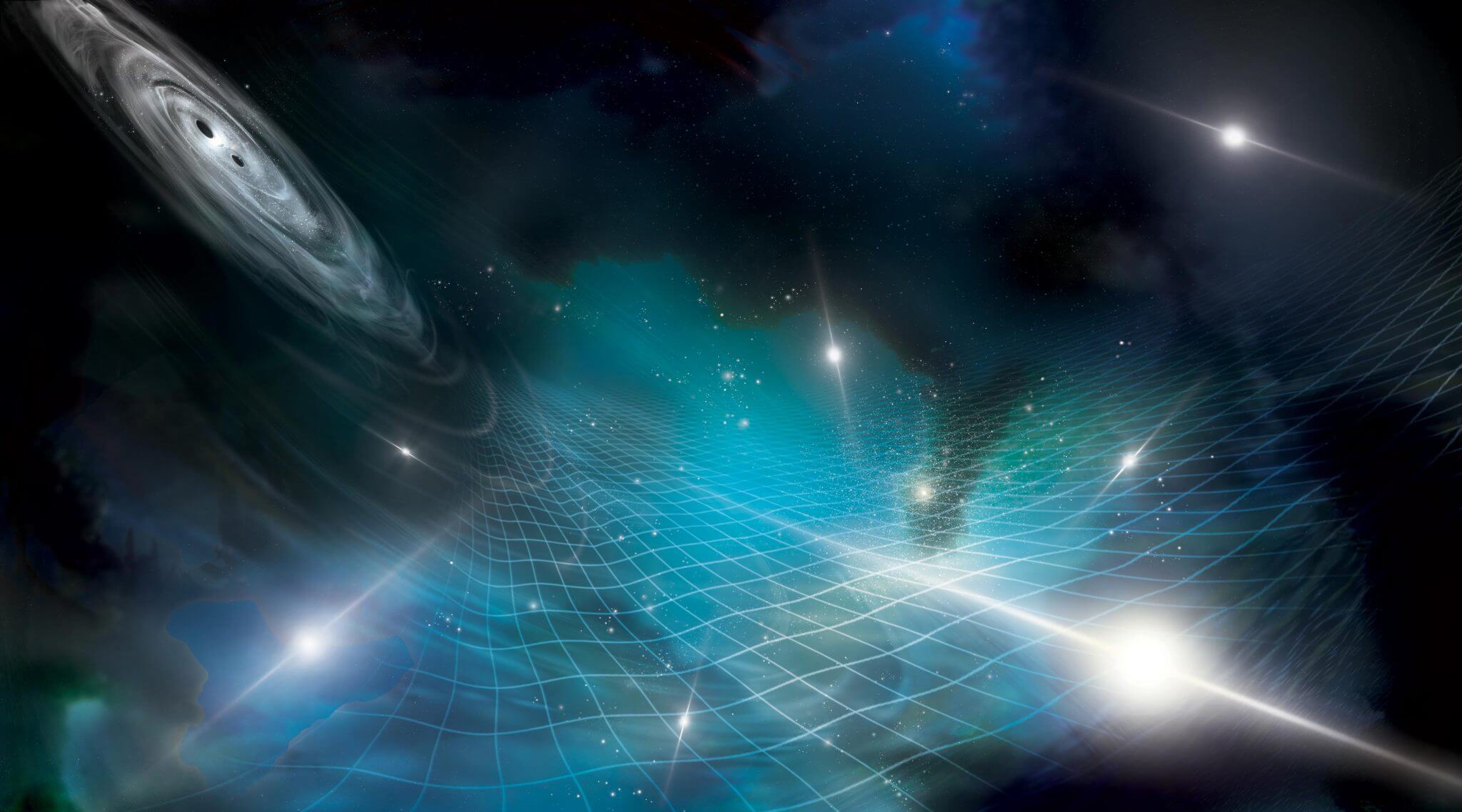"The effect of gravitational waves on pulsars is very weak and difficult to detect, but we built the credibility of the findings over time as we collected more data," said Caterina Cazziano, a team member at NANOGrav and senior lecturer at Caltech

Scientists have reported on The first proof that our Earth and the universe around us float in the background of a wavy movement of space-time called gravitational waves. These waves oscillate very slowly over years and even decades and are thought to originate primarily from pairs of supermassive black holes that spin slowly before merging.
This groundbreaking discovery is the result of 15 years of careful observations at NANOGrav (the North American Nanohertz Observatory for Gravitational Waves). NANOGrav includes more than 190 scientists from the USA and Canada. They use radio telescopes in Puerto Rico, Virginia and New Mexico to track 68 dead stars, called pulsars, in the sky. The pulsars served as a network of oscillating buoys In a sea of slow gravity waves.
"The effect of the gravitational waves on the pulsars is very weak and difficult to detect, but we built the credibility of the findings over time as we collected more data," said Caterina Cazziano, a team member at NANOGrav and a senior lecturer at Caltech. "In the future, we will continue to make more observations and compare our results with those of our partners in the world, and this will allow us to learn more from the data."
"We have a new way to study what happens in monstrous black holes at the heart of galaxies that are in a slow but irreversible death spiral," says Joseph Lazio, a member of the team from JPL. "We think this is a normal process in many galaxies, and we've seen many examples at different stages, but we're finally starting to glimpse one of the last important stages."
Albert Einstein first proposed the idea of gravitational waves in 1916. But only after about a hundred years were they discovered directly by LIGO (the Laser Interferometer Gravitational Wave Observatory), which detected waves from a distant pair of colliding black holes.
Unlike LIGO, which detects gravitational waves with a much higher frequency, NANOGrav, as its name suggests, focuses on low-frequency gravitational waves in the nanohertz range, meaning one cycle every few years.
High-frequency gravitational waves come from smaller pairs of black holes speeding around each other in the final seconds before they collide, while the low-frequency waves are thought to be created by supermassive black holes in the hearts of galaxies, with masses up to a million times that of our sun. which move around each other slowly and have millions of years to go before they merge.
In the new studies, NANOGrav is thought to have picked up the collective hum of gravitational waves from many pairs of merging supermassive black holes across the universe. "People compare this signal to a background murmur as opposed to the screams that LIGO picks up," explains Catciano, who is also a member of the LIGO team.
"It's like being at a cocktail party and not being able to pick up one specific voice. We hear the background noise," says Patrick Myers, a NANOGrav team member who helped conduct the statistical testing of the results.
More of the topic in Hayadan:

2 תגובות
There are no gravitational waves, because gravity is another name for Newton's gravitational force.
Newton's gravity does not exist.- and it is very easy to prove that there is no gravity for the earth.
If the Earth had gravity, then the law of conservation of energy would not hold on the Earth.
Since there is no doubt that the law of conservation of energy does exist, then the earth's gravity does not exist.
A. Asbar
If I understand correctly, gravity waves are actually ripples of the fabric of space-time. Therefore, I have several questions:
1. Gravitational waves affect the paths of photons in the universe, and essentially lengthen - or shorten - the distances that the photons travel. If so, then the fabric of space-time behaves exactly like the "ether" - whose existence was ruled out in the Michelson-Morley experiment! So what is the difference between the space-time fabric and the 19th century cosmic ether?
2. How is it possible to maintain distance measurements between the Earth and astronomical bodies, when it is now claimed that "the photons move in a storm of gravitational waves" throughout the universe?!? This claim appeared twice in this publication:
A. What is written in the almost last paragraph: "People compare this signal to background mumbling..."
B. What is written in the last paragraph: "We hear the background noise..."
3. What is the speed of movement of gravity waves? Today astrophysicists claim that our universe is expanding at a speed that is constantly increasing, and in the regions of the edge of the universe it is already expanding faster than the speed of light - something that is possible since the "fabric of space" is not made of matter, and therefore there is no limit to the speed of its expansion (yes, even faster than the speed of light! ). Therefore, can gravitational waves also propagate in our universe at any speed - and even move above the speed of light? And anyway, what determines the speed of gravity waves?
4. Written above:
"Unlike LIGO, which detects gravitational waves with a much higher frequency, NANOGrav, as its name suggests, focuses on gravitational waves with a low frequency in the nanohertz range, that is, one cycle every few years." To the best of my knowledge, the frequency of a nano-hertz is a billion cycles per second - so why does it say that it is a cycle every few years???